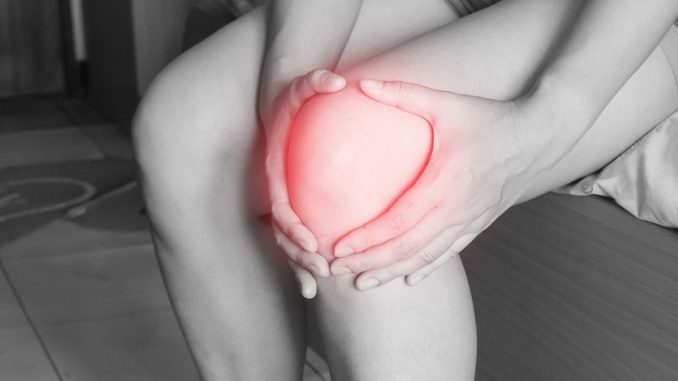
If you hike in the mountains regularly, chances are that you’ve had to deal with knee pain at some point – especially when carrying a heavy backpack or speed-hiking. The reason for the pain is mostly the sheer amount of force exerted on the knee joint. When walking on level ground the force can be 3 to 4-times your body weight. On steep descents this force can be doubled (see this study), putting a whopping 560kg of force on the knees of your average 70kg-sized Joe. Add the weight of a backpack or the momentum of moving quickly, and this force increases even more.
Our knees are of course designed to deal with this, but long distances, extra weight, weak supporting muscles, uneven terrain, worn-shoes or old injuries are often a catalyst for debilitating pain when hiking in the hills.
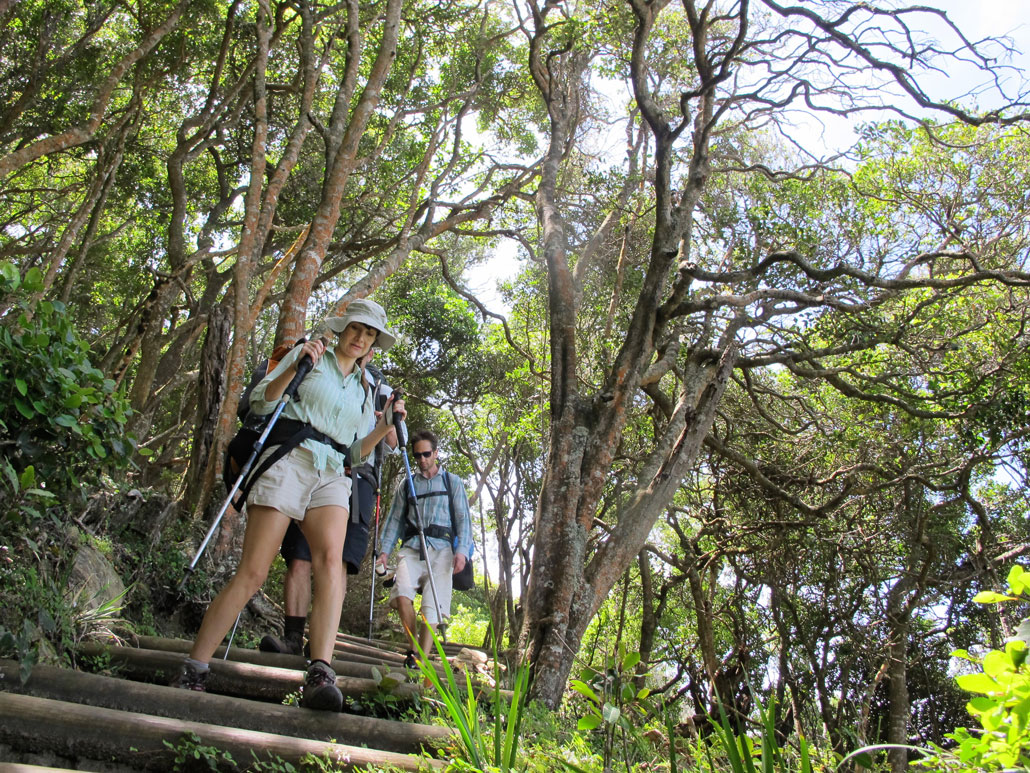
Understanding the knee
Most joints in your body are the ball-and-socket type, where the ball sits snugly in a hollow and can rotate as needed. The knee is a hybrid, which operates more like a hinge in a shallow socket, with the patella (kneecap) and ligaments keeping the system stable – hence the stabilising muscles are more important than with most other joints. A combination of sheer force, fatigue and weak muscles can cause injury and inflammation in this marvellous joint.
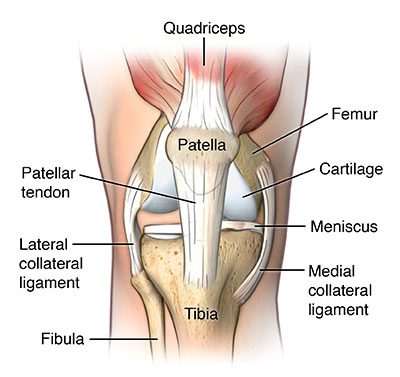
What to do when you experience knee pain
If you have severe or chronic knee pain, your first port of call should be to get professional medical assistance, such as from a physiotherapist. A combination of palliative treatment, mobilisation, exercises and stretching will often help to relieve the pain. Getting rid of the pain is one thing, getting rid of the problem is another. Below are some useful things to do in the longer run to help give knee pain the boot – many of these are interconnected, so take a holistic approach and try to implement most of these tips.
Lose weight
Whether it is body weight or pack weight or both – losing weight will help a lot towards solving the problem (more so if you are physically overweight). On a hike, plan what you pack around the type and steepness of the terrain.
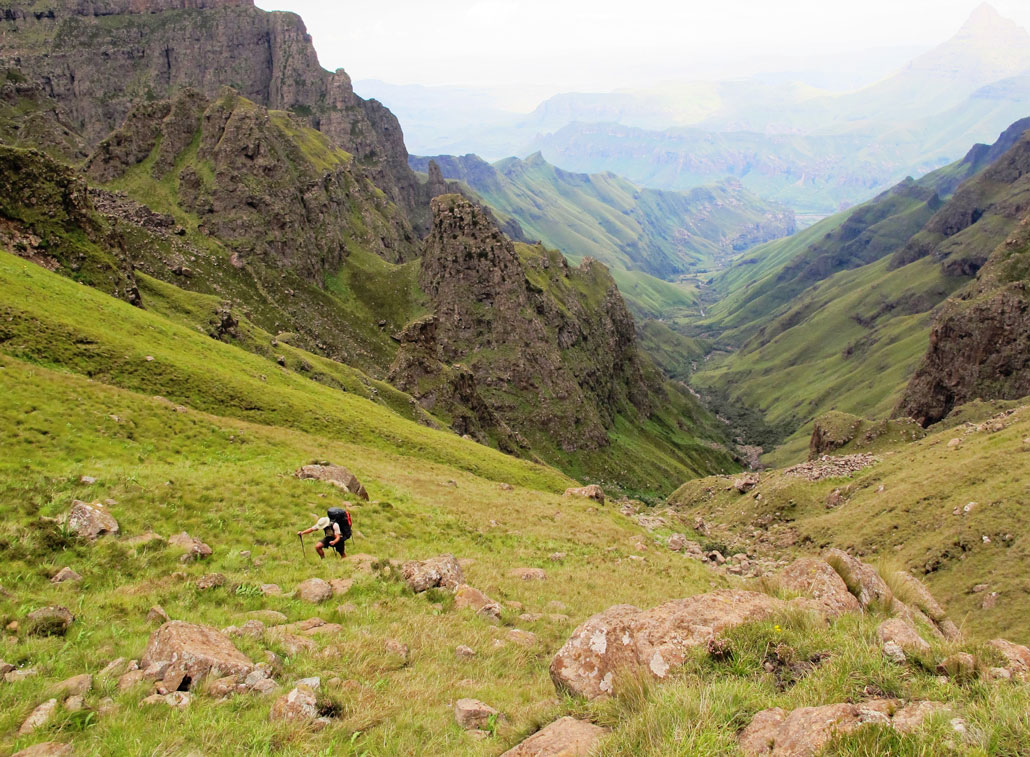
Strengthen, stretch and massage supporting muscles
The muscles to take care of are your quadriceps, hamstrings, calves and the iliotibial band. If you search on YouTube, you will find a host of instructive videos on how to strengthen and stretch these muscles. You do not need gym equipment; bodyweight-only exercises can get you out of the blocks. In the longer run, exercising with weights is recommended and has additional benefits such as increased bone density and weight loss. And remember: good technique and maintaining good posture are more important than increasing weight and repetitions – start off slow, do it right and reap the rewards.
Tip: some bodyweight-only exercises you can start today are cycling, lunges, step-ups and split squats.
Food and supplements
A healthy diet will improve your general well-being and assist in weight loss. Some foods will specifically help with joint-health and cartilage repair. Omega-3 fatty acids have been proven to make a meaningful contribution to joint-health (as well as a host of other health benefits) in the long run – so load up on avocados, nuts, olive and flaxseed oil, soy beans and fatty fish.

The supplements glucosamine and chondroitin are widely used for joint-health, and although the scientific testing is still inconclusive many people swear by it.
Anti-inflammatory medication can be used to relieve pain but be careful to not “hide” injuries and make it worse – pain is generally an indicator that something is wrong.
There is unfortunately also a host of supplements and “wonder-cures” on the market that have not passed the hurdle of rigorous scientific testing, so do your homework about what you put in your body.
Hiking technique
The four “s”es are crucial here: sideways, slower and smaller steps. On very steep terrain most paths will zig-zag sideways to keep the incline manageable. Taking smaller, slower steps on descents and focusing on posture and balance will also help take strain off your knees.
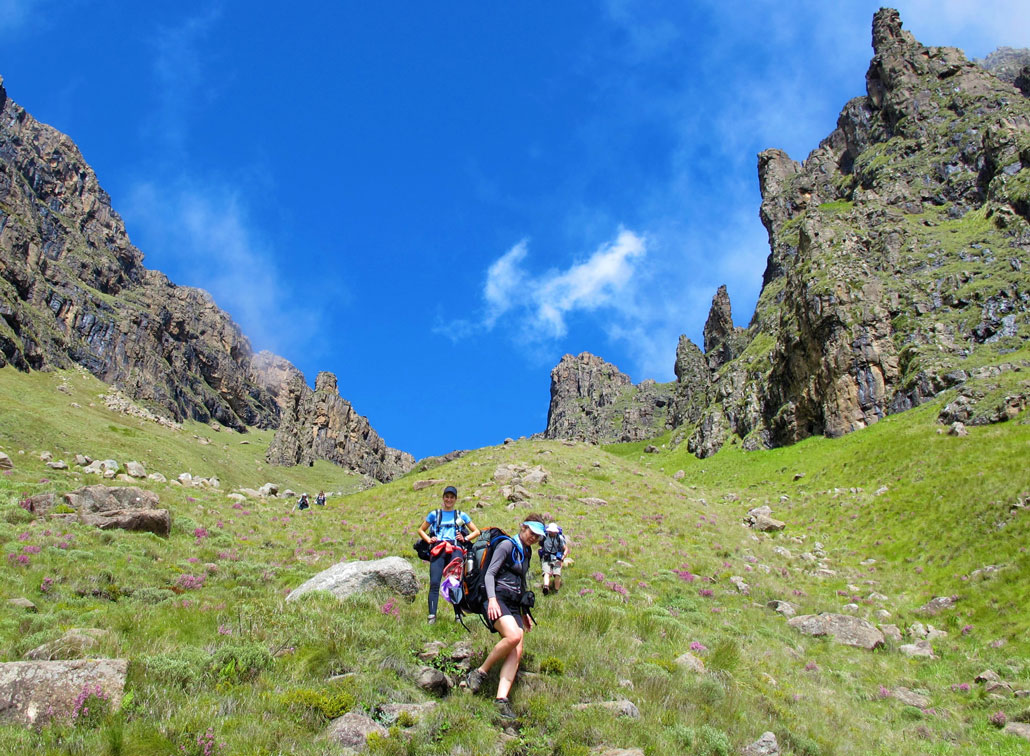
Trekking poles/a walking stick
Trekking poles have proven invaluable for me, and the scientists agree (read more here). Trekking poles transfer weight to your arms and help with stability. I recommend that you use two poles to provide stability on both sides.
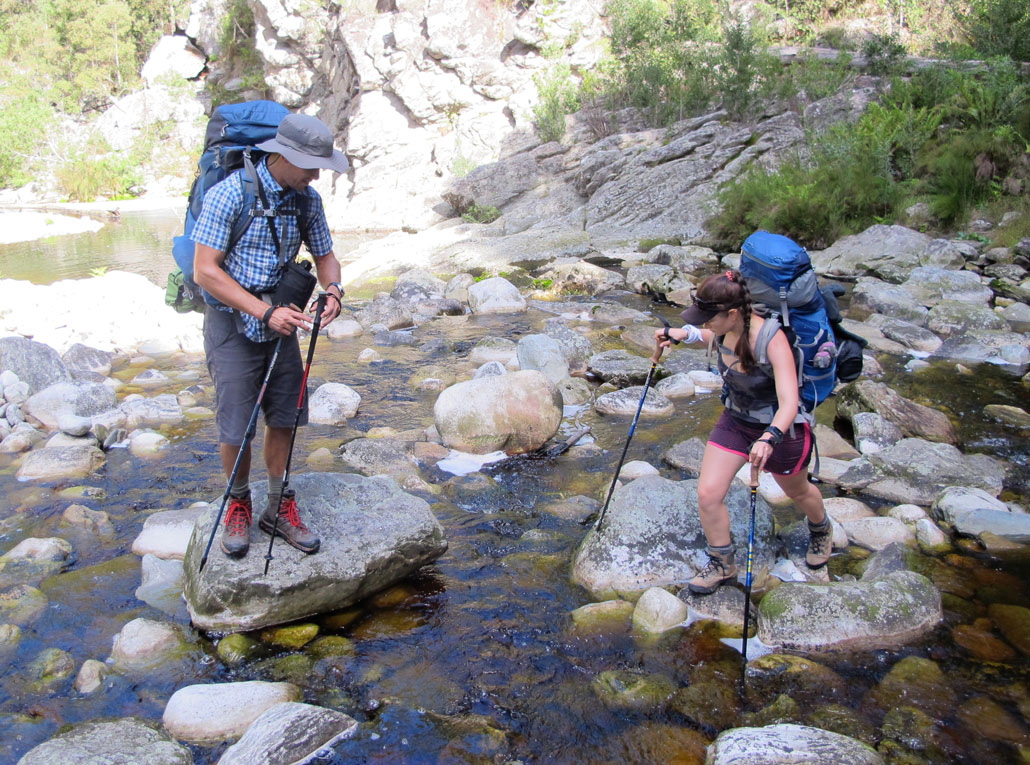
Checking your equipment
Keep an eye on the condition of your hiking shoes – excessive wear can induce over-pronation and loose shoes may cause instability, putting more strain on other body parts. A drooping or loosely fitted backpack may also result in more strain on the stabilising muscles, resulting in fatigue and injury.
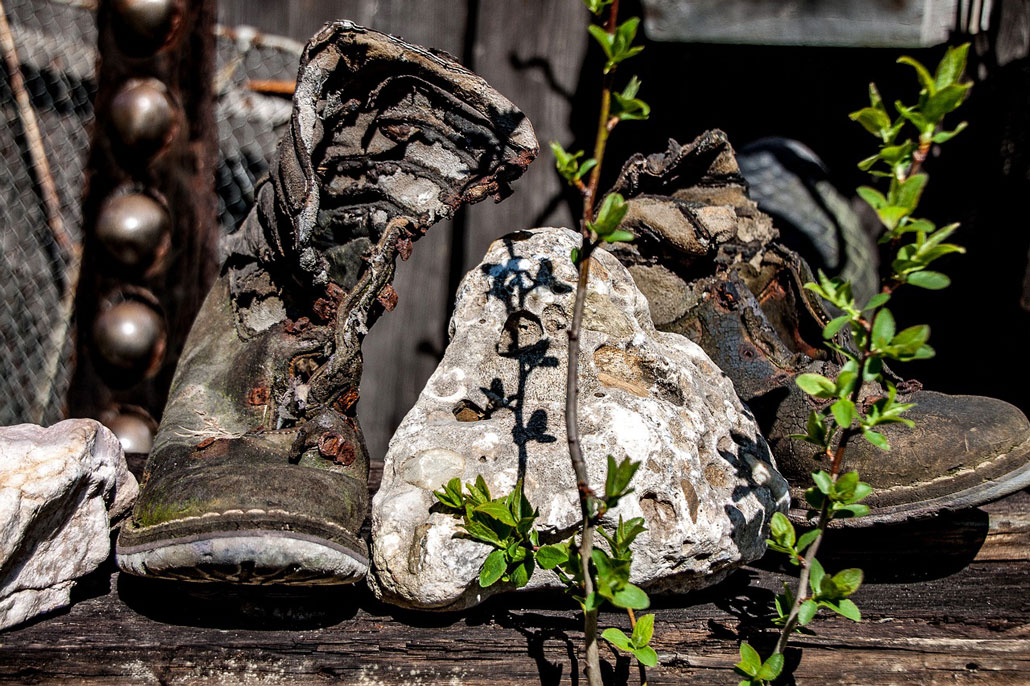
Knee braces and taping
People with existing injuries will especially benefit from the additional support and stability that knee braces and proper strapping/taping offers.
Other techniques and remedies
Do you have any other tips or remedies that have helped you to overcome knee pain? Please let us know in the comment section below!
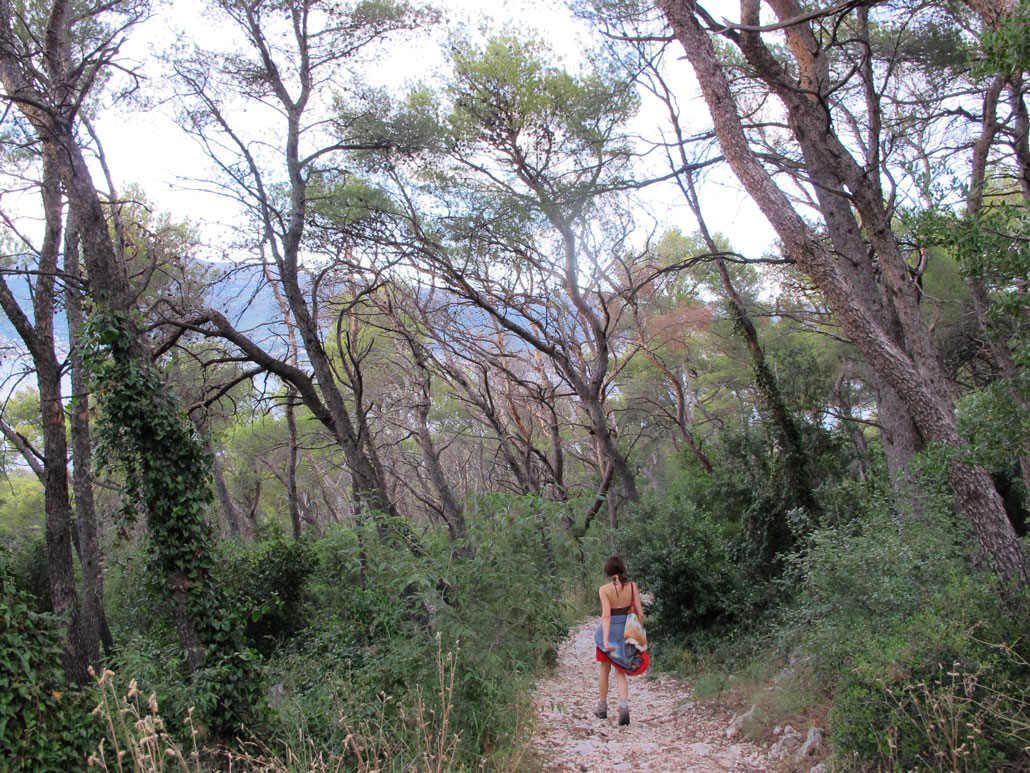


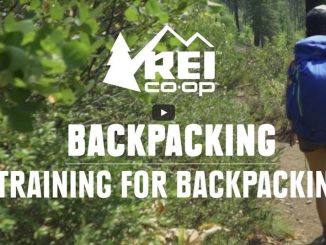
Hi Willem. Thanks for the informative article. One thing that helped me a lot was activating the posterior chain (glutes) with exercises and at the same time doing self-myofascial release on the overworked front muscles (quads). The epidemic of sitting for hours per day has left most people with long, lazy glutes and short, tight hip flexors, restricting hip movement and causing strain on the knee joint.
This is a great article, thank you Willem – I’d love to hear from the physios and biokineticists out there on specific exercises one can do to strengthen and stabilise the surrounding muscles.
Great article! I am struggling with a knee injury at present. My bio has advised to do slow step ups on to a chair to strengthen, while making sure my knee and foot are facing directly ahead. I also so slides to the side (wearing socks) while making sure both feet are facing directly forward to strengthen my inner thigh to which supports the knee. Any other inner thigh exercises that help with knee injury recovery would be appreciated!
Hi There. I am a Biokineticist from Somerset West and have a special interest working with knee pain. I just want to say the article above is very useful, thank you Willem. It is important to strengthen the muscles around your knee and especially your glutes (Buttocks muscles) but the key is to discover the correct techniques for climbing or stepping up rocks, steep angles and coming down hill. You don’t wont to squeeze or suck in muscles when you are hiking as this will drain energy from your body and is not an efficient way to hike. For more information on how these hiking techniques you are welcome to email me on carlwellness@gmail.com
I have found that when hiking, a lot of the time your foot, knee and body direction differs and that causes pain, or even injury. So I try to walk in such a fasion as to align them.
Take Acid Clear by Tones available from Dis chem. This is a homeopathic remedy used to clear acid and arthritis from the body. Works like a charm. Three bottles will be needed by most people although the benefits are felt almost Immediately. Costs about R100 a bottle.
Thank you all for positive information. I have a weak knee, actually very weird one. It comes out maybe 1/3 hikes, only suffer pain when the foot is picked up and moved forward, and only on descents, level or going up it has no issue, no swelling, the next day it’s 90% good, by the second day the knee is good to go again. I found strapping, anti-inflammatory and some painkillers help. Less pain is experianced when foot is turned out-ward… unknown where this comes from, may be an old injury, or just weak muscle. Will try all above info. Thanks. Very helpful
My knee is very weak and painful and when I’m walking there’s sound like something is cracking
Your ability to simplify complex concepts is admirable. You’ve made the topic accessible to a broader audience. To explore further, click here.